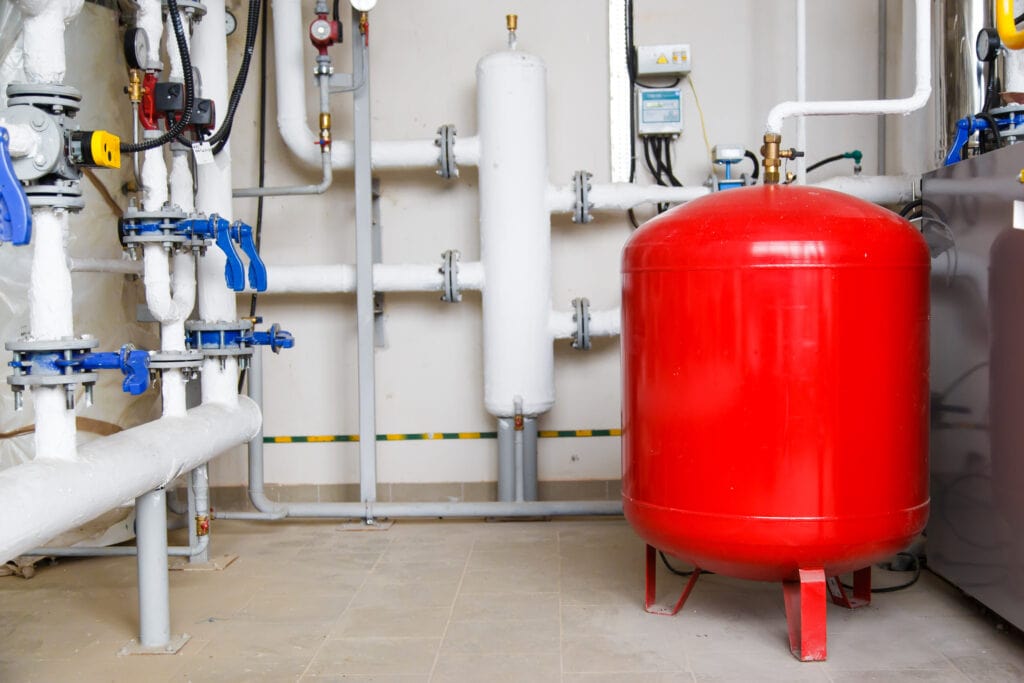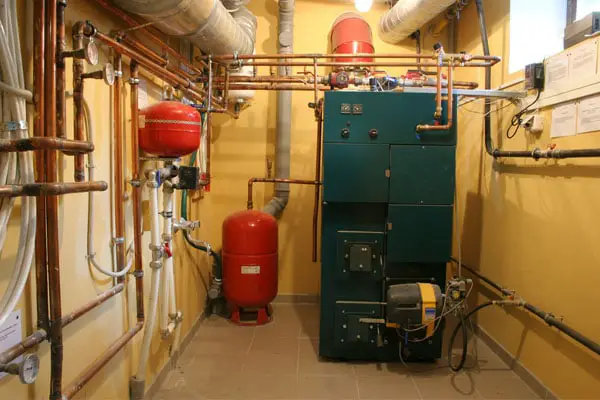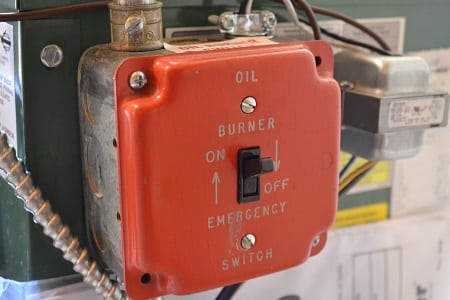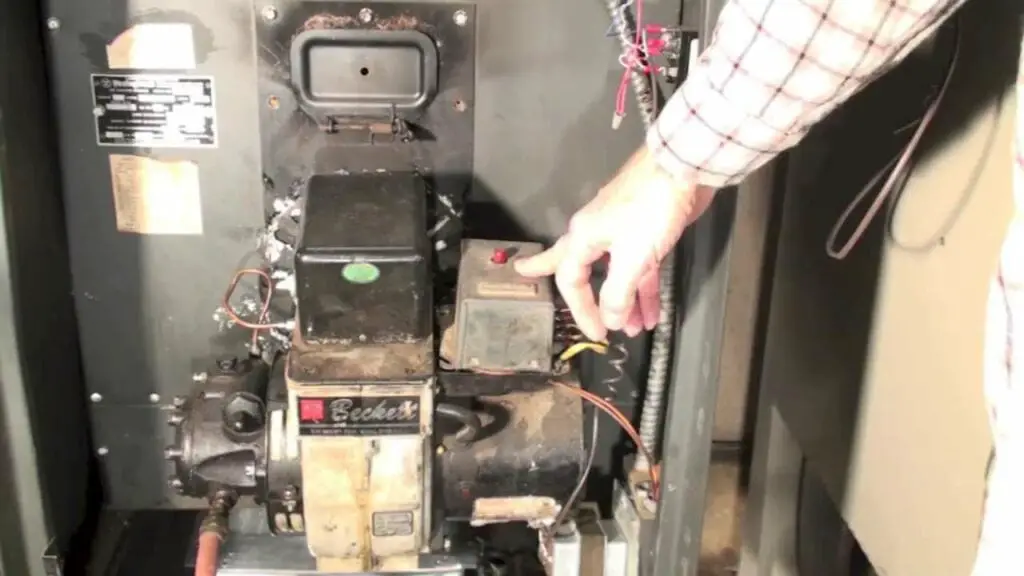Oil furnaces are important to keep you and your family warm and cozy during the winter months. So what do you do if your furnace starts acting up?
Before you call in a professional, you can check a few things on your own. It is quite possible that the solution might be very easy and simple.
The following are some of the issues that you might be experiencing with your furnace.

Why Won’t My Oil Furnace Turn On?
If your furnace doesn’t turn on, it is best to go through the following checklist before calling in a professional:
- Check the level of heating oil in your tank. Make sure that there is enough fuel in the tank, especially if your last delivery was a while ago. If your tank holds less than a quarter of a tank, then you should call for a heating oil delivery before turning on your heater.
- Your furnace is designed with an emergency system that will shut down your heater in case the burner flame goes out. Sometimes the heating system gets a false positive reading. In such a case, you simply need to flip the emergency switch, which is the red light button on your furnace, to get your heater running again.
- Your heater also has a reset button, but you cannot use it more than twice. Turn up the thermostat to the highest setting and press the reset button. This will flood the heating equipment with oil. With oil in your tank and the emergency switch on, you should not have any trouble turning the heater on. However, if it still does not turn on, then you should call for a professional heating oil service.
- If there is too much power running through the circuit, the breaker trips automatically in order to prevent electrical fires. Simply flip the breaker switch to restore power. Call in a professional if your heater still doesn’t fire up.
What Would Cause My Furnace to Turn on But Not Fire?
If your furnace turns on but does not fire up, it is probably because of a damaged, faulty, or dirty sensor/ignitor. The solution to this simple furnace problem is to replace the ignitor and clean the sensor. A flame sensor can go bad; however, usually, it is just dirty from carbon buildup and not broken.
How to Stay Safe While Troubleshooting an Oil Furnace
An oil furnace is an efficient, user-friendly, and cost-effective appliance that delivers uniform heating capabilities and low operating temperatures. However, there are a few precautions that must be taken when troubleshooting an oil furnace in order to eliminate the risk of injuries or accidental fires:
Avoid Keeping Combustibles Close
Do not keep inflammable liquids or combustible materials near your oil furnace. Although furnaces operate at low temperatures, there is a danger of fire if any inflammable materials are kept nearby.
Do Not Press the Reset Button More Than Twice
Whenever you press the reset button to manually start the furnace, make sure that you push it just once or twice. Pushing this button again and again will load a high amount of fuel into the combustion chamber, which can be quite dangerous.

Avoid Experimenting
An oil furnace is made up of small components, which can sometimes make it difficult to detect the root of the problem. In case you are not sure about how to proceed, it is best to avoid experimenting as it could lead to a serious accident. Moreover, it could cause your warranty to become void.
Avoid Blocking Registers
Make sure to keep the registers on the oil furnace free of blocks such as draperies or cloth. Ensuring proper clearance is vital for the reliable operation of your oil furnace.
What Should I Do If I Smell Gas When I Open My Furnace?
In case you smell gas when you turn on your furnace, you should immediately turn off the unit, evacuate your place, and call the fire department. It is also advisable to call your local gas company. However, they will not perform any repairs but will just provide an inspection.
How Many Times Should I Push The Ignitor Button If It Isn’t Lighting?
You can push the ignitor button multiple times; however, if it does not light up, it means that the sensor is dirty or faulty and you need to replace it.
What Can I Do if My Oil Furnace Won’t Fire?
One of the most common problems with oil furnaces is that sometimes they fail to turn up. If you are having trouble with your oil furnace, then there are a few things that you need to check before calling in a professional.
Check the Thermostat
If your furnace is not turning on, the thermostat has likely lost its programming, reset, or just been set on the wrong setting. Set your thermostat 10° above the current temperature to check if the system turns on. Also, make sure that the system is set to the ‘heat’ position.
Check the Oil
Lack of fuel is a common reason why your furnace won’t turn on. Check your top-mount fuel level gauge to ensure that you have enough oil left in your tank. If you let your tank go below ¼ of its capacity, you might run the risk of running out of fuel before your next delivery.
Check the Breaker
Make sure that both the service switch and the switch at the basement entry are on. Check the breaker panel to see if the power was interrupted. Verify that no one is doing any electrical work in your home before turning the breakers back on.

Check the Drain Pipe
Water removed from the air by the HVAC system collects in drain pans. A triggered float switch can prevent your furnace from turning on if this pan is full. In such a case, throw away the water and make sure that the drain pan is clear.
Check the Air Filter
Dirty air filters are another common reason that could prevent your furnace from turning on. Replace your air filter if it is dirty or clogged. Also, make sure that all the registers are open.
If your furnace still fails to turn up, then do not hesitate to call a professional to evaluate the problem.
How Do I Get My Oil Furnace to Turn On?
The following steps will help you turn on your oil furnace:
- Turn off the furnace power. If you are unable to find the power button, then turn off the furnace breaker located inside the main circuit-breaker inside your home.
- Ensure that the thermostat is set a few degrees higher than the surrounding temperature.
- Look for your fuel pump’s bleeder valve. It typically looks like a hex nut and sits at the four o’clock position on the front of the pump.
- Place a container under the bleeder valve and loosen the valve with a wrench.
- Press the reset button to start the furnace. You will see fuel pumping through the line.
- Keep the valve open until the foam clears, and a clear stream of fuel is established. Close the valve with the wrench. Your furnace should turn on automatically. Repeat the process again in case the furnace does not turn on.
How Do I Light the Pilot Light if It Is Out?
Relighting a pilot light is a simple process, and usually, the instructions can be found printed on the furnace. To ensure a safe process, check the directions of the manufacturer, and follow them precisely.

The following are some basic directions that will turn on the pilot light regardless of the model and make of your furnace:
- Turn off the power switch of your furnace.
- Turn the gas valve control knob to ‘pilot.’ Do not apply force if it is sticky as it could lead to damage that can cause gas leaks.
- Hold a match to the pilot burner while simultaneously pressing the red button.
- Once the pilot light is lit, continue holding the red button down for at least a minute. Let go of the button. If the flame remains lit, then you are good to go.
- If even after a few tries, you are unable to light the pilot light, then you might need the services of a qualified technician.
If you are still unclear about the whole procedure, then you can watch the following YouTube video to clear out any confusion.
When Is It Time to Call in a Professional?
In addition to the above-mentioned problems, various other things could be wrong with your furnace. If you find it difficult to diagnose the problem, experimenting or messing around could compound the expense and the problem. This is where it is best to call an experienced professional.
Another thing that should be kept in mind is that when you are furnace troubleshooting, there is a certain amount of gander involved that needs your care and attention. If you are not sure about how to proceed, then you should never try to work the problem. Also, make sure that you take all the necessary safety precautions that should be taken when working with electric, gas, and sharp edges.
Conclusion
Scheduling routine yearly maintenance is a sure way to ensure the operation of your heating system at an optimal level. These routine check-ups also help to identify small problems before they turn into major issues. Moreover, they help to enhance the lifespan of your heating system by up to 30%.
